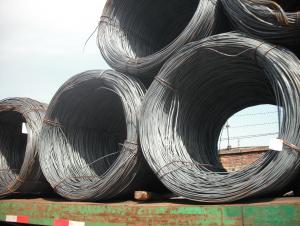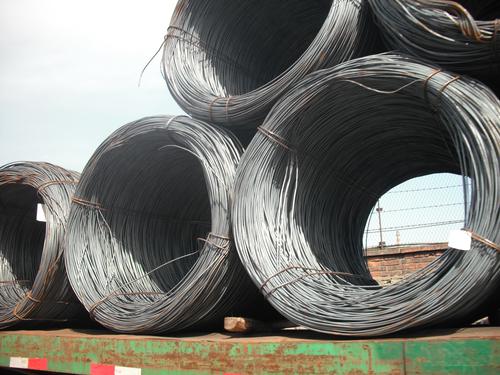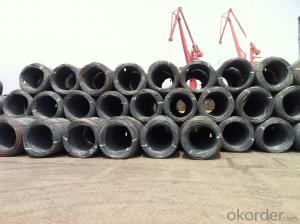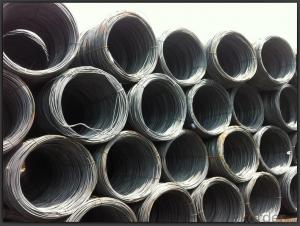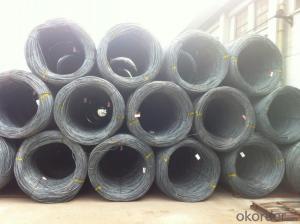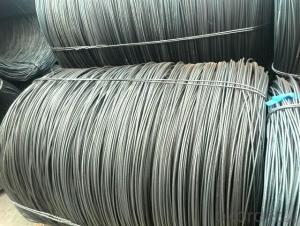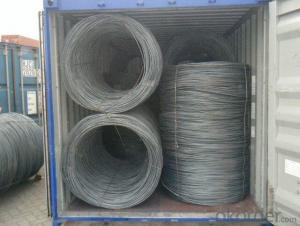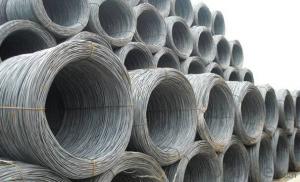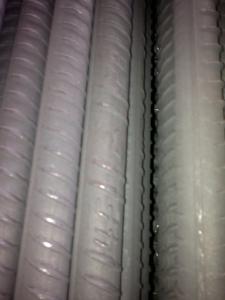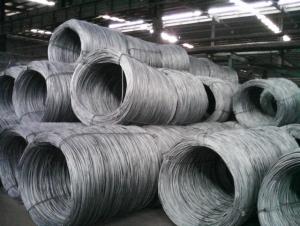Hot Rolled Steel Wire Rod SAE1008B
- Loading Port:
- China Main Port
- Payment Terms:
- TT or LC
- Min Order Qty:
- -
- Supply Capability:
- -
OKorder Service Pledge
OKorder Financial Service
You Might Also Like
Product Description:
OKorder is offering Wire Rod at great prices with worldwide shipping. Our supplier is a world-class manufacturer of steel, with our products utilized the world over. OKorder annually supplies products to European, North American and Asian markets. We provide quotations within 24 hours of receiving an inquiry and guarantee competitive prices.
Product Applications:
After hot-rolled the products shaped into coil and delivery as finished product, including round, square, rectangular, hexagonal and so on. Since most of the products are round, it is generally called wire rod. Carbon steel wire rod is widely used in construction and manufacturing. Carbon steel wire rod is mainly used for reinforcement of reinforced concrete and welded structure or reprocessed (roberts , nail, etc.) materials, especially used to produce wire drawing, welding electrode, nails, spring, electronic, precise machinery parts and so on.
Product Advantages:
OKorder's Wire Rod are durable, strong, and resist corrosion.
Main Product Features:
· Premium quality
· Prompt delivery & seaworthy packing (30 days after receiving deposit)
· Corrosion resistance
· Can be recycled and reused
· Mill test certification
· Professional Service
· Competitive pricing
Product Specifications:
Steel Grade: Q195/235, SAE1006-1018B Standard: ASTM, GB
Diameter: 5.5mm, 6.5mm, 7mm,8mm,9mm,10mm,12mm,14mm
Type: in coil, coil weight around 2MT Alloy or Not: Alloy
Surface: round, no twisted, light and smooth Chemical Composition: (Please kindly find our chemistry of our material based on Q195、Q235A and Q235B as below for your information)
Grade | Chemical Composition (%) | |||||
C | Mn | S | P | Si | B | |
SAE1008B | 0.10max | 0.32max | 0.045max | 0.040max | 0.30max | 0.0008min |
Mechanical properties | ||||||
Yield strength(N/mm2) | Tensile strength(N/mm2) | Elongation (%) | ||||
≥195 | 350-380 | ≥32 | ||||
FAQ:
Q1: Why buy Materials & Equipment from OKorder.com?
A1: All products offered byOKorder.com are carefully selected from China's most reliable manufacturing enterprises. Through its ISO certifications, OKorder.com adheres to the highest standards and a commitment to supply chain safety and customer satisfaction.
Q2: How do we guarantee the quality of our products?
A2: We have established an advanced quality management system which conducts strict quality tests at every step, from raw materials to the final product. At the same time, we provide extensive follow-up service assurances as required.
Q3: Can stainless steel rust?
A3: Stainless does not "rust" as you think of regular steel rusting with a red oxide on the surface that flakes off. If you see red rust it is probably due to some iron particles that have contaminated the surface of the stainless steel and it is these iron particles that are rusting. Look at the source of the rusting and see if you can remove it from the surface.
Images:
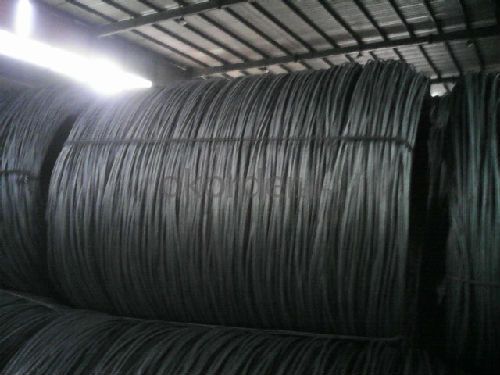
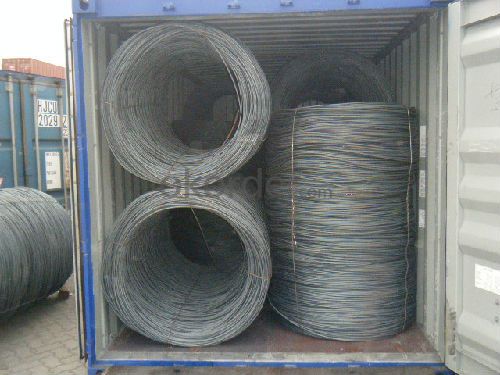
- Q: How is steel wire rod used in the manufacturing of wire forms for solar panels?
- Steel wire rod is an essential component in the manufacturing of wire forms for solar panels. It serves as the raw material that is shaped and formed into various wire structures used in the construction of solar panels. The steel wire rod undergoes a series of processes to transform it into wire forms suitable for solar panel production. The first step involves drawing the steel wire rod through a series of dies to reduce its diameter and increase its length. This process is known as wire drawing and results in a more uniform and smooth wire with the desired dimensions. Once the steel wire rod is transformed into wire, it can be further processed to create specific wire forms for solar panels. These wire forms can include support frames, interconnectors, busbars, and grounding wires. The wire forms are typically designed to provide structural stability, electrical conductivity, and mechanical support to the solar panel. The wire forms are manufactured using various techniques such as bending, cutting, welding, and shaping. The steel wire rod's malleability and strength make it an ideal material for these processes. It allows the wire to be easily shaped and formed into intricate structures while maintaining its structural integrity. Furthermore, the steel wire rod used in wire forms for solar panels is often coated or treated to enhance its durability and corrosion resistance. These protective coatings can include zinc, aluminum, or polymer-based coatings, which provide an additional layer of protection against environmental factors such as moisture and UV radiation. In summary, steel wire rod plays a crucial role in the manufacturing of wire forms for solar panels. It provides the raw material necessary to create the desired wire structures that offer structural stability, electrical conductivity, and mechanical support to the solar panel. The malleability and strength of steel wire rod allow it to be easily shaped and formed into intricate wire forms, while protective coatings enhance its durability and resistance to corrosion.
- Q: What are the common production processes for oxygen-coated steel wire rod?
- The common production processes for oxygen-coated steel wire rod include cleaning the wire rod to remove any impurities, applying a thin layer of oxygen coating to enhance corrosion resistance, and then drying and cooling the coated wire rod before it is ready for further processing or usage.
- Q: How is steel wire rod used in the manufacturing of wire forms for elevator cables?
- The manufacturing process of wire forms for elevator cables heavily relies on steel wire rod. To meet the necessary strength and flexibility requirements, the steel wire rod is initially processed and drawn into a specific diameter and shape. Afterward, a protective layer is applied to the wire rod, enhancing its durability and resistance to corrosion. Once the steel wire rod is prepared, it undergoes further processing to form wire strands. These strands are then twisted together, resulting in elevator cables with the desired load-bearing capacity and strength. The specific requirements of the elevator cable determine the number of wire strands and the tightness of the twisting. The utilization of steel wire rod in wire form manufacturing guarantees that elevator cables can withstand the continuous movement and heavy loads involved in elevator operation. The safety and reliability of the elevator cables are greatly influenced by the strength and flexibility of the steel wire rod. Moreover, strict quality control measures are implemented in the manufacturing of elevator cables using steel wire rod to adhere to industry standards and regulations. This ensures that the wire forms produced using steel wire rod are of superior quality and capable of enduring the demanding demands of elevator systems. In conclusion, the role of steel wire rod in the manufacturing of wire forms for elevator cables is paramount. Its strength, flexibility, and durability are crucial in creating elevator cables that can safely and reliably transport passengers and goods within buildings.
- Q: What are the different heat treatment options available for steel wire rod?
- The different heat treatment options available for steel wire rod include annealing, quenching and tempering, normalizing, and stress-relieving.
- Q: How is steel wire rod used in the manufacturing of wire forms for window blinds?
- Steel wire rod is a crucial component in the manufacturing of wire forms for window blinds. It serves as the primary material from which the wire forms are fabricated. Firstly, steel wire rod is selected for its high strength and durability, making it ideal for supporting the weight of blinds and withstanding daily use. It is essential that the wire forms are sturdy enough to hold the blinds in place and endure repeated opening and closing without losing their shape or functionality. The steel wire rod is typically processed through a series of manufacturing steps to transform it into the desired wire forms. These steps may include drawing, annealing, and coating processes. Drawing involves pulling the steel wire rod through a series of dies to reduce its diameter, resulting in a thinner and more flexible wire. Annealing is performed to relieve any internal stresses in the wire and enhance its ductility, making it easier to bend and shape. Finally, coating processes may be applied to provide additional protection against corrosion or to add aesthetic appeal. Once the steel wire rod has been processed, it is shaped into various forms for window blinds. These wire forms include tilt rod connectors, cord connectors, and control brackets. Tilt rod connectors are used to connect and control the movement of the slats in blinds, allowing them to be tilted open or closed. Cord connectors are utilized to secure the cords that control the raising and lowering of the blinds. Control brackets, on the other hand, are responsible for attaching the blinds to the window frame and ensuring stability. Overall, steel wire rod plays a vital role in the manufacturing of wire forms for window blinds. Its strength, durability, and versatility make it an excellent material choice, ensuring that the wire forms can withstand the demands of daily use and maintain their functionality over time.
- Q: What are the different surface treatments for steel wire rod?
- Steel wire rods can undergo different surface treatments to enhance their properties and improve performance in various applications. Common surface treatments include: 1. Pickling: Wire rods are immersed in an acid solution to remove oxide scale or rust, resulting in a clean surface, improved corrosion resistance, and preparation for further treatments. 2. Phosphating: Through a chemical conversion process, a thin layer of phosphate coating forms on the wire rod surface. This coating enhances adhesion of subsequent coatings, improves corrosion resistance, and provides a better surface for painting or other finishes. 3. Galvanizing: Wire rods are coated with zinc, which acts as a sacrificial anode and offers excellent corrosion resistance. Galvanized steel wire rods are ideal for outdoor applications or environments with high humidity or exposure to corrosive elements. 4. Electroplating: Metal is deposited onto wire rods using an electric current, allowing for various coatings like nickel, chrome, or copper. These coatings offer improved corrosion resistance, enhanced aesthetics, and increased hardness or wear resistance. 5. Heat treatment: Controlled heating and cooling processes alter the microstructure and mechanical properties of wire rods. This treatment can enhance strength, toughness, hardness, or ductility, depending on the specific heat treatment process applied. 6. Coating: Wire rods can be coated with protective or functional coatings like epoxy, polyethylene, or PVC. These coatings provide additional corrosion resistance, insulation, or lubrication properties and can be applied through processes like hot-dip coating, electrostatic powder coating, or extrusion coating. Each of these surface treatments for steel wire rods offers unique benefits and is chosen based on the specific application's desired properties and requirements.
- Q: How is steel wire rod used in the production of wire ropes for marine applications?
- Steel wire rod is used in the production of wire ropes for marine applications as it serves as the raw material for manufacturing the individual wires that are twisted together to form the rope. The steel wire rod undergoes a series of processes including drawing, heat treatment, and galvanizing to enhance its strength, flexibility, and corrosion resistance. These wire ropes are then utilized in various marine applications such as ship mooring, lifting heavy loads, and securing offshore structures due to their high tensile strength and durability in harsh marine environments.
- Q: What are the different heat treatment processes used for steel wire rod?
- There are several different heat treatment processes commonly used for steel wire rod to improve its mechanical properties and overall performance. These processes include annealing, quenching and tempering, normalizing, and stress relieving. Annealing is a heat treatment process that involves heating the steel wire rod to a specific temperature and then slowly cooling it to room temperature. This process helps to reduce the hardness and brittleness of the wire rod, making it more ductile and easier to work with. Annealing also helps to remove any internal stresses or strains that may have developed during the manufacturing process. Quenching and tempering is a two-step heat treatment process that involves first heating the steel wire rod to a high temperature and then rapidly cooling it in a quenching medium such as oil or water. This rapid cooling process, known as quenching, hardens the wire rod by forming martensite, a hard and brittle phase. However, this hardened wire rod is also very brittle and prone to cracking. To improve its toughness and ductility, the wire rod is then tempered by reheating it to a lower temperature. This tempering process helps to relieve some of the internal stresses and allows the formation of tempered martensite, which is stronger and more ductile than martensite, but less brittle. Normalizing is another heat treatment process that involves heating the steel wire rod to a temperature slightly above its critical temperature and then allowing it to cool in still air. This process helps to refine the grain structure of the wire rod, making it more uniform and improving its strength and toughness. Normalizing also helps to reduce any internal stresses or strains in the wire rod, improving its dimensional stability and reducing the risk of distortion during further processing. Stress relieving is a heat treatment process that is typically performed after other forming or machining processes have been completed on the steel wire rod. It involves heating the wire rod to a specific temperature below its critical temperature and then slowly cooling it. This process helps to relieve any residual stresses that may have developed during the previous processes, reducing the risk of distortion or cracking in the wire rod. Overall, these different heat treatment processes for steel wire rod provide various benefits such as improved strength, ductility, toughness, and dimensional stability. The specific heat treatment process chosen depends on the desired mechanical properties and performance requirements for the wire rod in its intended application.
- Q: How is steel wire rod used in the production of wire strands for offshore oil and gas structures?
- Steel wire rod is a crucial component in the production of wire strands used for offshore oil and gas structures. These wire strands are typically made up of several individual steel wires twisted together to create a strong and durable cable. To begin the production process, steel wire rods are first inspected for quality and any defects are identified and removed. The rods are then subjected to a series of heat treatments to enhance their strength and flexibility. This involves heating the rods to high temperatures and then rapidly cooling them through a process called quenching. Quenching helps to improve the mechanical properties of the steel wire rod, making it more suitable for the demanding conditions encountered in offshore environments. After heat treatment, the steel wire rods are drawn through a series of dies to reduce their diameter to the desired size. This process, known as wire drawing, ensures that the wire strands produced will have the required tensile strength and dimensional accuracy. Once the desired diameter is achieved, the steel wire rods are further processed to form wire strands. Multiple steel wires are twisted together using specialized machines to create a strand with a specific number of wires and a particular lay angle. The lay angle determines the flexibility and strength of the wire strand, making it crucial for offshore applications where the cables need to withstand high loads and harsh conditions. The resulting wire strands are then subjected to various surface treatments, such as galvanization or coating, to protect against corrosion and ensure longevity in offshore environments. These treatments provide additional protection to the steel wire strands, allowing them to withstand exposure to seawater, chemicals, and other corrosive elements commonly encountered in offshore oil and gas structures. Finally, the wire strands are cut to the required lengths and assembled into larger cable structures, such as wire ropes or umbilicals, which are used in various applications within offshore oil and gas structures. These cables play a vital role in supporting and securing the infrastructure, such as platforms, pipelines, and subsea equipment, ensuring their stability and integrity even in extreme conditions. In summary, steel wire rod is essential in the production of wire strands for offshore oil and gas structures. Through a series of processes including heat treatment, wire drawing, and twisting, steel wire rods are transformed into strong and durable wire strands that can withstand the harsh conditions encountered in offshore environments. These wire strands are integral components in the construction and maintenance of offshore oil and gas structures, providing stability, support, and protection against corrosion.
- Q: How is the steel wire rod market affected by technological advancements?
- The steel wire rod market has been greatly impacted by technological advancements, resulting in increased efficiency, improved quality, and reduced costs. Automation, in particular, has played a key role in revolutionizing the production process. By making it faster and more precise, automation has reduced the need for manual labor and increased overall productivity. This has allowed manufacturers to meet growing market demands by increasing production capacity and reducing lead times. Additionally, advancements in metallurgy and material science have led to the development of high-performance steel wire rods. These rods possess superior strength, durability, and flexibility properties, making them suitable for various applications. Thanks to technological advancements, manufacturers can now produce steel wire rods with precise chemical compositions and microstructures, resulting in improved mechanical properties and enhanced performance. Moreover, technological advancements have also facilitated the development of advanced testing and quality control methods. Manufacturers can now utilize non-destructive testing techniques, such as ultrasonic testing and magnetic particle inspection, to ensure the quality and integrity of steel wire rods. These advancements have significantly reduced the risk of defects and failures, leading to increased customer satisfaction and trust in the market. Furthermore, technology has positively impacted the distribution and marketing of steel wire rods. With the advent of e-commerce platforms and digital marketing strategies, manufacturers can easily reach a wider customer base and promote their products globally. This has increased market competitiveness and facilitated the growth of the steel wire rod market. In conclusion, technological advancements have revolutionized the steel wire rod market by improving production processes, enhancing product quality, reducing costs, and enabling effective distribution and marketing strategies. As technology continues to advance, it is expected that further innovations will benefit the steel wire rod market, ensuring its sustained growth and competitiveness in the future.
Send your message to us
Hot Rolled Steel Wire Rod SAE1008B
- Loading Port:
- China Main Port
- Payment Terms:
- TT or LC
- Min Order Qty:
- -
- Supply Capability:
- -
OKorder Service Pledge
OKorder Financial Service
Similar products
Hot products
Hot Searches
Related keywords
